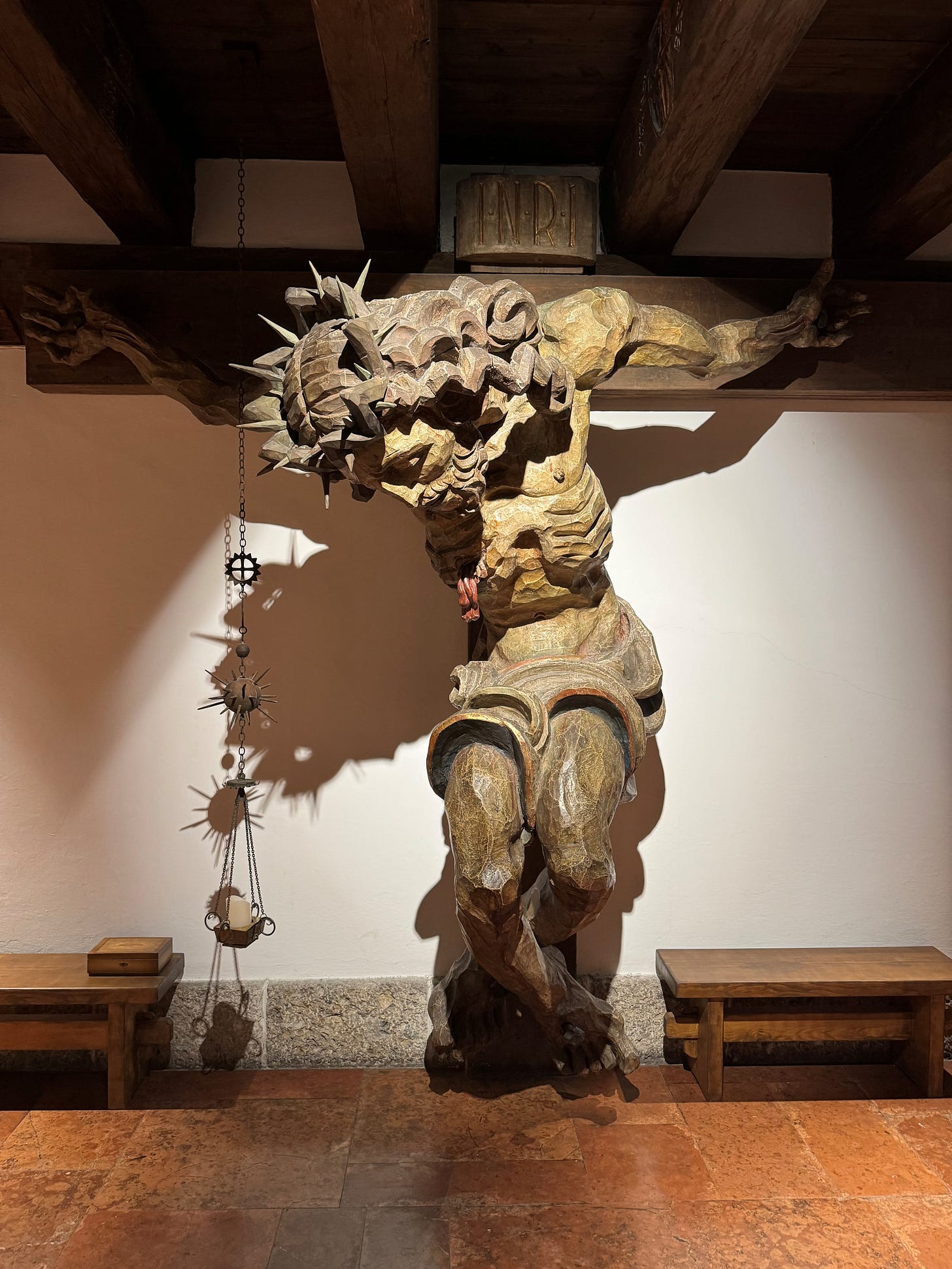June 2025 issue, cultivating scholarship, and your chance to pick an ASQ cover
Featuring an overview of our latest issue, reflections by Christine Beckman and András Tilcsik on the value of cultivating articles, and a poll for choosing a future cover!
“Cascais, Portugal” Timothy M. Devinney. Used with the photographer’s permission.
ASQ June Issue 2025
The June issue of ASQ has a bit of wanderlust. From spreading passion across teammates in China, to philanthropic contributions as insurance against political transition in Taiwan. From young job seekers reconciling the use of social connections with meritocracy in Spain, to doctors influenced by peers to perform more births via caesarean section in Brazil. From the innovative benefits of multi-method analytics in the U.S., to democratic organizing and its effects on society around the world. And we have an account of digital nomads, whose wanderlust motivates them to find a way to create work stability despite their freedom in frequently changing locations.
As the June issue marks our last as editors, Deputy Editor András Tilcsik and I also share some parting words about the role of journals in our field (an abbreviated version of our posts in the newsletter about curating, cultivating, certifying, and convening scholarship). Bon Voyage!
On Democratic Organizing and Organization Theory
Julie Battilana, Christine M. Beckman, and Julie Yen
To what extent does autocracy at work spill over to normalize authoritarian governments? As threats to democracy loom, this article argues for more study of how organizations shape democratic and authoritarian societies. The authors argue that we need to better understand the processes and outcomes associated with democratic governance and worker participation, such as conflict, scaling, innovation, and efficiency. They advocate greater understanding of how organizational governance structures influence outcomes beyond the organization, such as expectations of civic participation in society and democratic governance more broadly.
Place Iteration and Integration: How Digital Nomads Navigate the Mobile Worker Paradox
Melanie K. Prengler, Anthony C. Klotz, and Chad Murphy
Digital nomads have wanderlust for traveling but need to work. How do they manage the tension between their desire to be mobile and a lack of structures to facilitate work? The authors show that digital nomads interpret placefulness—a deep connection to their physical location—differently according to their degree of wanderlust. Some create temporary homes to balance the freedom of mobility with familiar work practices; others oscillate between freedom and familiarity, revisiting familiar locations. The article shows how mobility and a sense of place can be compatible.
CSR as Hedging Against Institutional Transition Risk: Corporate Philanthropy After the Sunflower Movement in Taiwan
Yishu Cai, Lori Qingyuan Yue, Fangwen Lin, Shipeng Yan, and Haibin Yang
Political connections to an authoritarian regime can give firms a competitive advantage, but how do firms respond when such regimes undergo democratic transitions? Studying Taiwan’s 2014 Sunflower Movement, the authors show that when mass protests signal that a regime change is likely, firms engage in philanthropy to protect themselves from the risks associated with their political connections. The effect is stronger for firms in regions with strong civil society or where political opposition is on the rise. The article sheds light on the signaling functions of social movements.
Methodological Pluralism and Innovation in Data-Driven Organizations
Ryan T. Allen and Rory M. McDonald
Multi-method analysis—in papers and in firms—leads to innovation. In this study, the authors show that when organizations use both quantitative and qualitative analyses, their new-product sales increase more compared to when organizations rely on one or the other type alone. Data-driven innovation based on quantitative analysis often leads to incremental innovations. Qualitative analysis can lead to greater novelty but also more failures. With these findings, the authors show how methodological pluralism can help organizations make the most of their efforts to innovate new products.
Riding the Passion Wave or Fighting to Stay Afloat? A Theory of Differentiated Passion Contagion
Emma L. Frank, Kai Krautter, Wen Wu, and Jon M. Jachimowicz
How easily does passion spread within a team? This article, based on an experience-sampling study at an engineering company, shows that high-passion teams have higher performance and social connections. However, it is emotionally exhausting and effortful to increase levels of passion compared to other emotional states, and this can undermine the beneficial effects of high passion in teams. The study offers important nuance to theories of emotional contagion and suggests that passion acquired from others may be less beneficial than self-initiated passion.
A Little Help from My Friends? Navigating the Tension Between Social Capital and Meritocracy in the Job Search
Laura Adler and Elena Ayala-Hurtado
How do job seekers reconcile the use of personal connections with the ideal of merit-based hiring? Leveraging a difficult Spanish labor market, the authors conducted interviews and conducted a survey experiment. They find that using connections is seen as more legitimate for low skill jobs, when connections don’t lead to circumventing the interview process, and when the person is qualified. These features create situational alignment, particularly when the job seeker is a close tie, whereby job seekers can justify using connections to find a job and reconcile the conflicting logics of social capital and meritocracy.
Peer Influence in the Workplace: The Moderating Role of Task Structures Within Organizations
Jillian Chown and Carlos Inoue
The fact that peer influence shapes work practices is well known. The authors argue that task structures moderate peer influence and the extent of information sharing among doctors. They investigate the consequential context of doctors’ decisions to perform births via caesarean section or vaginal delivery. Examining a dataset of nearly 5 million births across over 900 hospitals in Brazil, the authors find that working with peers whose practice favors C-sections leads the focal physicians to perform more C-sections, particularly among physicians with higher task variety and those with higher task similarity with their peers.
Book Reviews
Sander van der Linden. Foolproof: Why Misinformation Infects Our Minds and How to Build Immunity
Oliver Hahl and Jisoo Hyun
Timon Beyes. Organizing Color: Toward a Chromatics of the Social
Stoyan V. Sgourev
Guido Alfani. As Gods Among Men: A History of the Rich in the West
David Lingelbach and Valentina Rodríguez Guerra
Michael Lounsbury and Joel Gehman. Concise Introduction to Organization Theory: From Ontological Differences to Robust Identities
Heather Haveman
Gail T. Fairhurst and Linda L. Putnam. Performing Organizational Paradoxes
Stewart Clegg
Benjamin Shestakofsky. Behind the Startup: How Venture Capital Shapes Work, Innovation, and Inequality
Andrew B. Hargadon
Maryann P. Feldman and Martin F. Kenney. Private Equity and the Demise of the Local: The Loss of Community Economic Power and Autonomy
Daniel Armanios and Hanzelle Kleeman
Stewart R. Clegg. Frameworks of Power, Second Edition
Roy Suddaby
Academic Values and ASQ: Cultivating
By Christine Beckman (Editor) and András Tilcsik (Deputy Editor)
If our goal as scholars is to develop clear explanations of the social world—to understand deeply and describe accurately what we see—journals are a key mechanism for sharing those explanations. We aim to develop new understandings and be open to new perspectives, based on rigorous, careful thinking. We seek not just to write papers but to build knowledge. Journals serve this larger purpose as they help to curate, cultivate, certify, and convene. This month, we tackle the cultivating role of journals (having tackled curating in our last post in April).
Cultivating practices aim to ensure that articles are impactful and likely to be read. Different journals take this more or less to heart, but editorial teams help develop papers and have input into their final form and content. Journals educate scholars not just about how to practice data transparency but about how to sharpen their theoretical contributions and how to write clearly. A developmental approach to the review process aims to improve the quality of discourse regardless of a paper’s final outlet. The goal is not to be obtuse but to be readable, because readability enhances impact.
ASQ seeks to cultivate the writer’s voice, not to write the paper that reviewers or editors think should or could be written.
Having a multitude of methods (qualitative, quantitative, simulation, mixed method) and a variety of approaches (inductive, deductive, abductive) is useful to avoid an overly rigid formula about what a contribution looks like. Although this makes it more challenging for authors to know what exactly an ASQ article looks like, we have consistently embraced a developmental approach to reviewing, seeking to highlight the unique potential of each paper.
Yet, we also want to encourage good writing and clear exposition. ASQ is fortunate to have always had exceptional managing editors to assist authors. In 2007, former managing editor Linda Johanson wrote a short essay, “Sitting in Your Reader’s Chair: Attending to Your Academic Sensemakers,” which has been downloaded over 4,000 times. Today, associate managing editor Ashleigh Imus offers regular guidance and thoughts on the writing process with “Ashleigh’s Writing Corner” in this Substack newsletter. We have developed and updated FAQs for reviewers and for authors and detailed writing tips for ASQ authors. András recently mentioned to an economist colleague the role of ASQ’s managing editors and the support they provide to authors. Her response was immediate: “Oh, so that’s why ASQ papers are so well written!” It was heartening to hear that from someone outside our field—someone who publishes in other journals yet recognizes the craft of writing that sets ASQ apart.
In 2013, the ASQ Blog was created (an initiative of former editor Jerry Davis). This student-run team helps cultivate new scholars in a multitude of ways. They interview ASQ authors for a behind-the-scenes view of the research, writing, and review process and, in so doing, seek to demystify the process. When the pandemic hit and Zoom became ubiquitous, the team expanded their efforts by organizing several virtual panels of editors and ASQ authors who offered guidance in real time—a great example of how to use technology to cultivate scholarship and connect with the community.
Another notable feature of the ASQ Blog is that it is run entirely by doctoral students. The ASQ editorial team supports their efforts, but the blog team hosts events on topics of most interest to them and interviews authors of a subset of the articles we publish. This serves our larger goal of cultivating a community of doctoral students and early-stage faculty who consider ASQ their intellectual home—a goal highlighted since 2018 by the annual ASQ Dissertation Award. This award goes to the best dissertation-based article published in ASQ in the prior year. An award committee reviews all of the eligible papers, and the winner is announced at the AOM meeting and in the September issue. This is a competitive award because around half of the articles published in ASQ since 2018 have been based on dissertations, and in 2024 we surpassed 60 percent. We are proud to help develop some of the best work by emerging scholars in the field.
Various other practices support our goal of cultivation. We encourage excellent visual presentations of data (an initiative of former editor Henrich Greve), and even when we do not send a submission out for review, our editors often offer some feedback that might be helpful as authors consider other journals. Sometimes that feedback is theoretical, sometimes empirical, and sometimes both. And we offer this feedback in a timely way. For submissions that are not sent out for review, decisions are returned on average in five days. Over the past four years (remember that the pandemic was still very much with us in 2021), 87 percent of all submissions were returned within 90 days and 97 percent within 120 days. Including desk rejections, the average number of days under review was 41, and that number was 73 for submissions sent to reviewers. In 2024, those days under review were 35 and 64, respectively. In 2024, 97 percent of new submissions had decisions within 90 days. In addition to providing feedback quickly, we pay close attention to the number of revisions requested. Over half of manuscripts that receive a revision opportunity receive a final decision during the second round of review, and only 2 percent of submissions that have a revision opportunity are sent out for review more than three times. Of the 2,500 new manuscripts received in the last four years, 17 percent received a revision decision, and about 5 percent will be published.
Given the small numbers of papers that make it through this process, it is important to ensure that the papers we publish are rigorous and trustworthy. We will talk about the role of journals in certification in our next post.
Our student-run ASQ Blog features interviews with ASQ authors that offer insights into the research and writing process. Check out these three recent posts!
Valerio Iannucci (Boston University) and Elisabeth Yang (Yale School of Management) interview Arvind Karunakaran (Stanford University)
Peter S. Polhill (Cornell University) and Bonita Das (York University) interview Leandro S. Pongeluppe (University of Pennsylvania)
Pongeluppe, Leandro S. (2024). The Allegory of the Favela: The Multifaceted Effects of Socioeconomic Mobility
Fabio Busicchia (Polytechnic University of Milan, School of Management) and Tailun Chen (Zhejiang University) interview Mia Chang-Zunino (ESCP Business School) and Stine Grodal (Northeastern University)
Grant Jacoby (University of North Carolina) interviews Jason Davis (INSEAD)
Cover submissions from readers: Pick one!
In April, we invited this newsletter’s readers to submit photos they thought could make a great ASQ cover. Thank you to all the talented photographers who submitted. Below is a curated selection of the stunning entries we received. Now it’s your turn to help decide:
Which photo would you like to see on the cover of ASQ?
Take a moment to scroll through the submissions and cast your vote for your favorite. The winning photo(s) will be featured on the cover of an upcoming issue.
Stay tuned for the results in next month’s newsletter!
Cover 1: Bluest Blue
Cover 2: Autumn Leaves
Cover 3: Monastery of St. Benedikt
Cover 4: Sunflowers
Cover 5: Surfer













Chris & András, do I read the numbers correctly? Of the roughly 2500 papers submitted in the past 4 years, 425 received an R&R request and ultimately, 125 of the 2500 submissions were published. By my calculations, that means that whereas only 5% of all submissions were published, 29% of those invited to revise were published. Message to authors: getting through to the R&R stage is critical. Make sure your initial submission has been seen by as many eyes as possible, that you've work-shopped the paper at conferences & seminars, and that you've taken seriously all the feedback you've received.